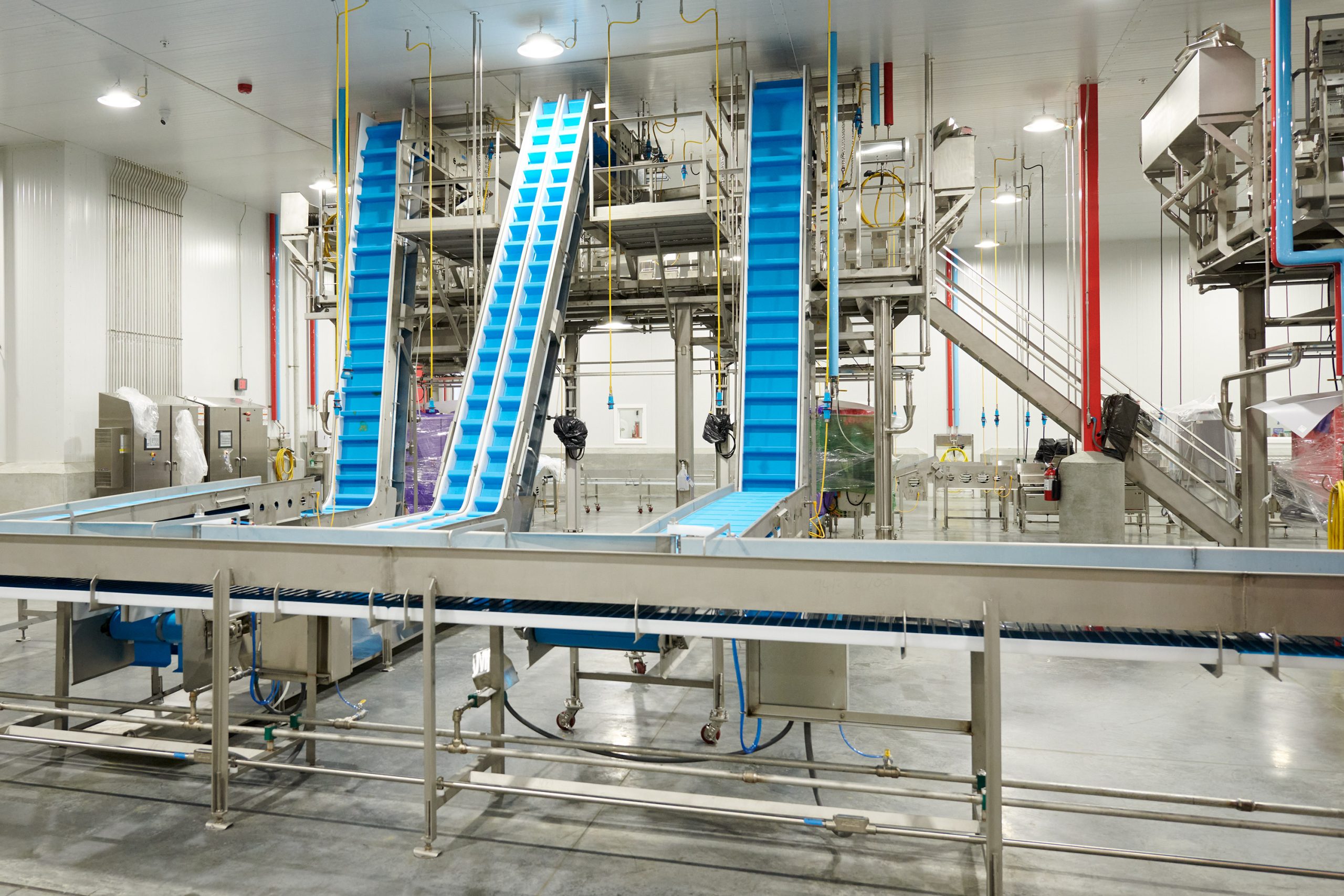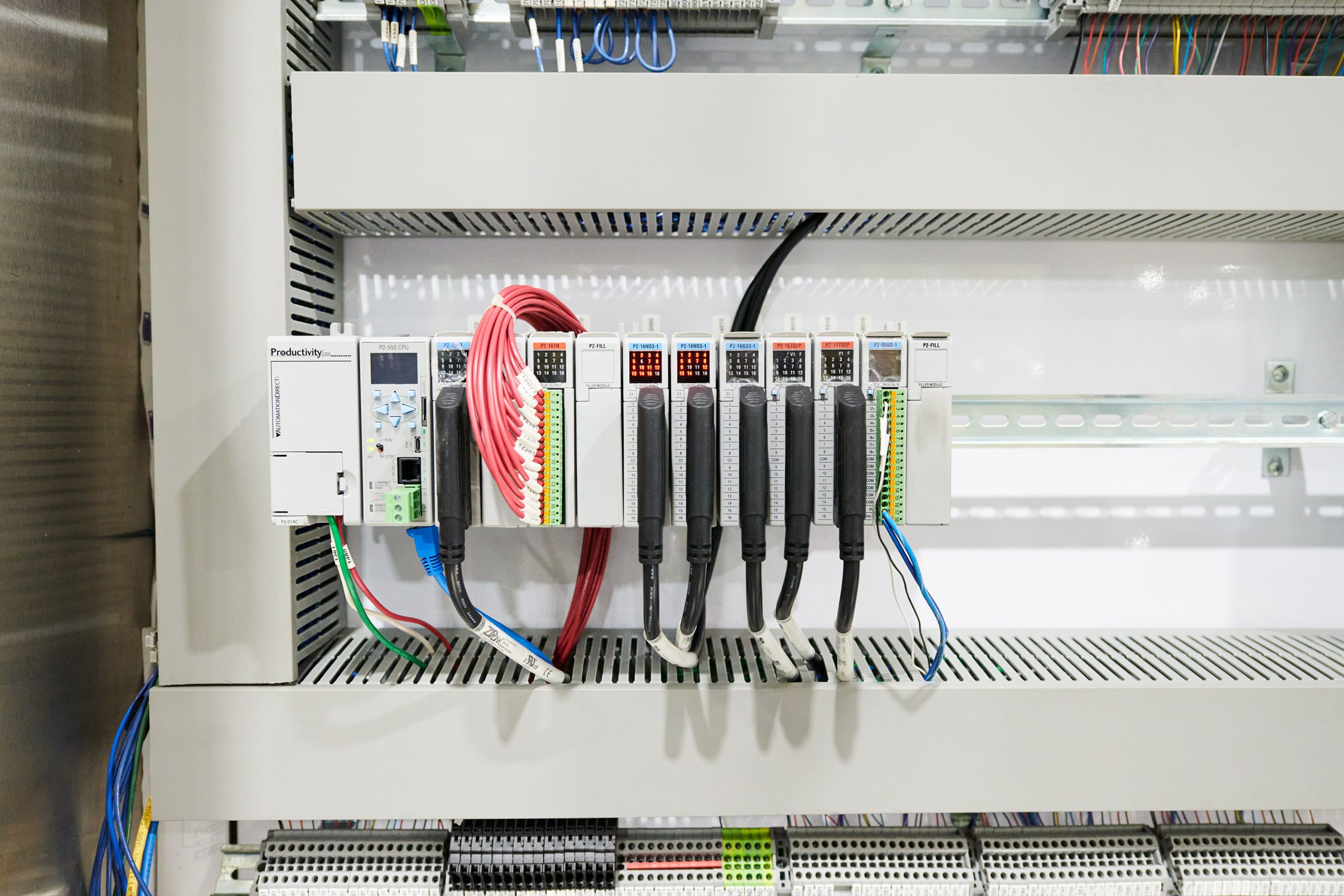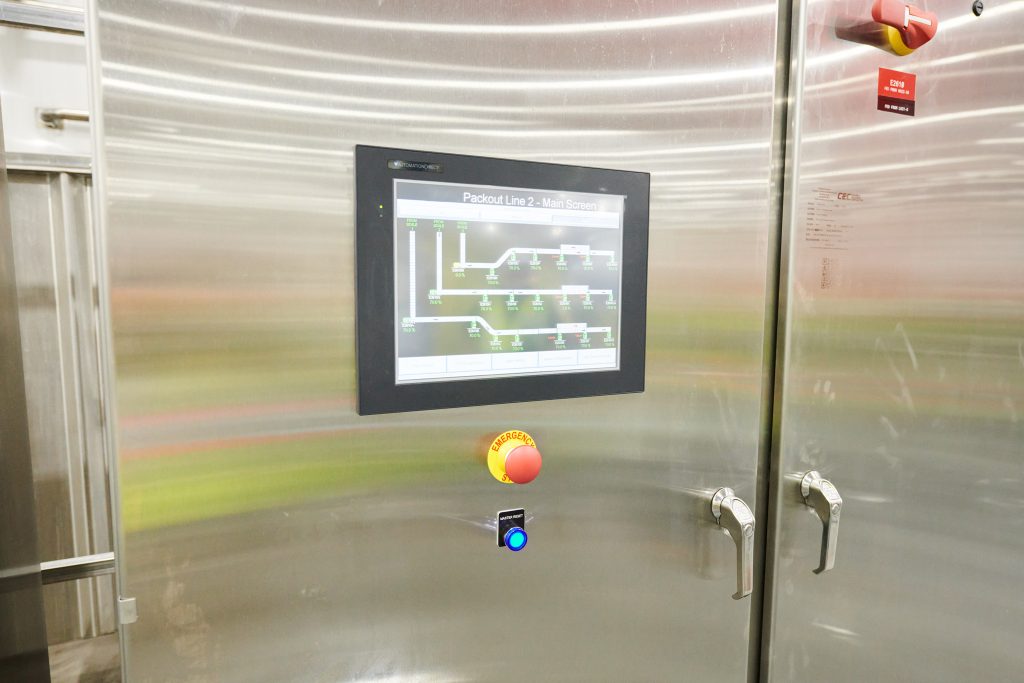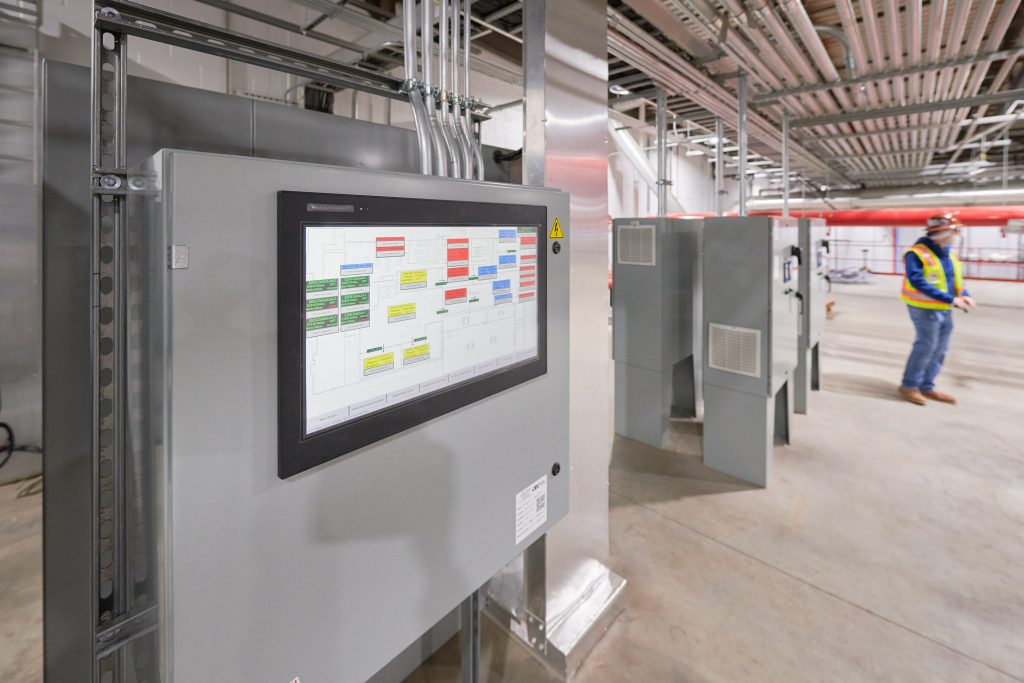A system integrator supports their food processing client, implementing industrial automation technologies for a mix of OEM equipment and systems throughout the facility.
By Jordan Hulsey, Caldwell Electrical Contractors, Inc.
With busy lives and schedules often bursting at the seams, ready-to-eat (RTE) food has become a convenience that many indulge in—and some may even rely on. RTE meal providers highlight the taste, quality, and nutrition of their offerings, emphasizing premium ingredients and careful preparation as key selling points. However, an often-overlooked factor is the advanced automation operating behind the scenes in the kitchen to help create first-rate products. By automating processes like ingredient handling, cooking, and packaging, providers can ensure each meal is prepared safely, reliably, and cost-effectively.
RTE kitchens supply restaurants, convenience stores, hospitals, schools, and cafeterias with fully prepared and cooked food products that simply need to be reheated. When a leading RTE kitchen specializing in a variety of meat and specialty products decided to expand to a new location, they turned to Caldwell Electrical Contractors, a trusted partner and member of the AutomationDirect SIDirect program.

SIDirect is a network of systems integrators (SIs) and panel shops that have demonstrated exceptional product knowledge and application expertise with automation products, a dependable tool for end user companies of all sizes to match their automation outsourcing needs with trusted providers. The Caldwell team has nearly 40 years of experience providing electrical and SI services for a variety of industries. Not only does Caldwell internally maintain core competencies, but they also work with other local technical specialists—such as Nick Bell of Interconnecting Automation—to flexibly extend their capabilities. Throughout the course of this project, Caldwell and Bell developed a state-of-the-art turn-key automation solution for the new facility, which not only leveraged best practices from the client’s two existing sites but also incorporated the latest technological advancements (Figure 1).
Based on the construction schedule, work began with some of the utilities and then progressed sequentially into the processing and packaging areas.
Beginning at the End
To maintain sanitary conditions for food processing, the work areas and equipment in contact with food are frequently washed down and thoroughly cleaned. During these sanitation procedures, the water runoff—which also contains ingredients, cleaning solutions, and other byproducts—is commonly collected for additional treatment until it can be properly disposed of by transferring it to the local wastewater agency.
The wastewater flows from the production area through a network of pipes and into the wastewater holding tanks, known as equalization (EQ) basins. These EQ basins are equipped with level sensors to continuously monitor water levels, and also include blowers to aid in agitation and ensure the water remains well-mixed. The EQ basins store the wastewater until it is ready to be processed through a sophisticated system using pumps and treatment procedures. This system is designed to monitor and adjust the pH levels, while also removing any solids present in the water.
For this client, Caldwell equipped the wastewater handling system with an AutomationDirect Productivity2000 micro-modular programmable logic controller (PLC) to locally control this area, and provide connectivity with the larger plant-wide automation network. The PLC monitors and controls the level and pH, operating pumps and valves as needed to transfer the liquid and adjust the pH using caustic or acid. The system also provides event and data logging, and alarm generation, so the operations and maintenance team can respond quickly if any disruptions occur.
Keeping Things Moving
Many food and other manufacturing facilities are arranged into an upstream area where raw ingredients are stored, a midstream area where the products are combined, cooked and otherwise produced, and a downstream area where they are packaged. For this facility, a sophisticated series of conveyors are used to ensure ingredients and food products move efficiently throughout the facility and are safely packaged. Caldwell was tasked with integrating specialty conveyors from multiple original equipment manufacturers (OEMs) into a single control system optimized for seamless operation, with some localized controls.
A total of 40 mobile conveyors—capable of being easily adjusted and moved between workspaces—required local control panels with variable speed drives (VFDs). Caldwell designed and built self-contained VFD enclosures with flexibility in mind, allowing the mobile conveyors and their controls to be relocated or installed at different points throughout the facility without significant infrastructure changes. The standalone VFD enclosures provide protection from moisture and chemicals during harsh washdown conditions. Caldwell used slope-top stainless steel enclosures to keep electronics inside dry and prevent water from pooling on exterior surfaces. Low profile Schmersal pushbuttons stay cleaner than more traditional industrial options, are water and oil proof (IP69K), shock resistant, and compatible with gloves worn by employees in the food processing areas.

For other operational areas, more expansive control panels were needed (Figure 2). The CLICK PLC, a compact and reliable micro brick controller, is ideal for carrying out many logic and automation tasks. It can also readily be interconnected with the industrial automation Ethernet network, if needed.
Three electrical enclosures support continuous in-motion scaling, and three more operate the packout system controls. When a cooking operation begins, raw ingredients are transported from freezers via conveyors into the processing line. Continuous in-motion scaling helps maintain an uninterrupted flow of items while carefully measuring the throughput for streamlined and consistent performance. The packout conveyors complete the system, transporting and portioning cooked products into the final packaging and subsequent shipping process.
Exhaustive Options
Maintaining clean air throughout the facility is a must, especially when the barbecue ovens are operating. The exhaust system for cooking fumes and airflow is managed by a series of automated air handling fans working together to maintain precise levels of positive, negative, or neutral air pressure in specific rooms throughout the facility at any given time, depending on process needs. In addition to the fans, the exhaust/supply system consists of 67 Ethernet-enabled VFDs and 12 PLCs that work together to keep the system within the desired specifications. Several of the VFDs are equipped with motor lead filters to reduce noise and voltage spikes, especially in cases where the motor is located far from the enclosure. This is important since the exhaust system controls are housed in three climate-controlled enclosures outside the washdown zone, away from the production ovens.
To meet the processing demands of the advanced exhaust, scaling, and packing systems, the AutomationDirect Productivity2000 PLC was selected. Productivity2000 is a micro-modular expandable platform, with robust communication and extensive processing power able to accommodate a wide range of discrete, analog, and motion I/O modules utilized throughout the facility. The intuitive and free ProductivitySuite PLC programming software is straightforward to use for both developers and maintenance staff. The PLC is designed to seamlessly connect with a wide range of products from AutomationDirect as well as other manufacturers.

Selecting the ZIPLink wiring solution was an easy choice to manage the extensive I/O going to and from the PLCs. ZIPLink cables and connectors are a pre-wired solution for PLC I/O modules (Figure 3) and provide simplified panel fabrication while taking up significantly less space than traditional terminal blocks. This streamlined solution not only saves time and money during installation, but also provides long-term benefits, as the design helps minimize wiring errors and makes traceability easier, enabling faster troubleshooting and more efficient maintenance.
Throughout a series of projects, Caldwell has installed over 10 Productivity2000 systems, and about six CLICK systems.
Seeing the Big Picture
Overall operations are visualized and provide operator control options with numerous human-machine interfaces (HMIs) (Figure 4). To protect the local controls from the washdown environment, C-more HMI panels are housed in sloped stainless steel enclosures. An additional ten remote HMIs are installed strategically throughout the facility, allowing staff to monitor and interact with processes throughout the production areas, away from the physical equipment. For added convenience, remote access is provided through Caldwell’s branded Wise ViewPoint mobile app remote access solution, which is based on the StrideLinx industrial VPN hardware and secure, cloud-based platform.


Figure 4: Local controls (L) in the washdown zone are housed in stainless steel enclosures, while remote HMIs (R) allow production staff to interact with equipment outside of the washdown zone. The large color, graphical C-more displays make it easy to see system status at a glance.
To enhance functionality, facility monitoring is incorporated into the industrial automation system. Rather than using a separate platform for building monitoring, these features are easily managed within the industrial automation system. With the Wise Viewpoint mobile app, real-time process data as well as facility status can be visualized graphically on smartphones and tablets. This system allows users to remotely monitor the fryer oil inventory, room pressurization control, conveyors operation, wastewater status, PID control loop information, and fault conditions.
Conclusion
Automation is a key element to ensure product consistency while maintaining sanitary, efficient, and reliable operations. As a member of the SIDirect program, Caldwell is well-equipped for success, and their clients benefit from proven experience. Caldwell cooked up a turnkey automation solution for their RTE kitchen client—ranging from automation of smaller localized equipment, larger systems, OEM integration, and facilities monitoring, with remote access—featuring AutomationDirect products. The excellent results and support were so impressive that it led to a long-term contract for ongoing service. A foundation built on trust has led to a profitable and successful collaboration for all parties involved.
All figures courtesy of Caldwell Electrical Contractors, Inc.

Jordan Hulsey, Director of Service and Automation at Caldwell Electrical Contractors, Inc., brings nearly two decades of experience delivering exceptional service to industrial clients. Hulsey has progressed from his early work in field service, to supervising a UL Panel Shop and performing project management, and he now oversees a wide range of automation services. With expertise spanning design, build, and ongoing support, his team is well-equipped to handle virtually any automation project.

